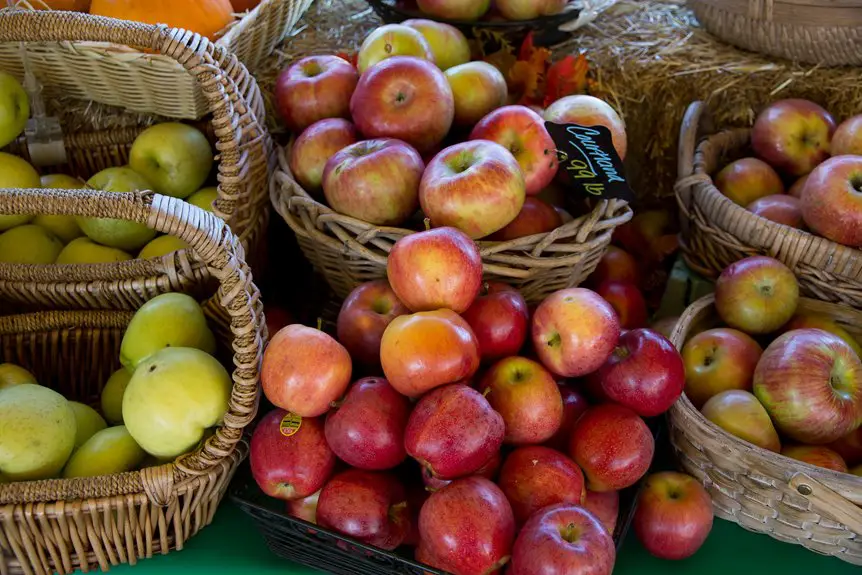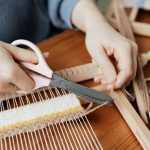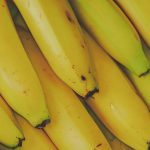You can buy raw, untreated abaca fiber in the USA from trusted suppliers like Greenfibre USA and Pacific Abaca, who offer quality, sustainably sourced fibers. In Manila, local markets and direct exporters provide authentic bulk options at competitive prices, often with better deals for larger orders. Make sure to check fiber quality and supplier reliability before purchasing. Keep exploring to discover key qualities, pricing tips, and sustainable sourcing practices that can help you make the best choice.
Table of Contents
Key Takeaways
- Purchase raw abaca fiber from reliable USA suppliers like Greenfibre USA, Pacific Abaca, and FiberX for quality and sustainable sourcing.
- Use online platforms like Amazon, eBay, and Etsy for accessible untreated abaca fiber options with customer reviews.
- Alibaba and Etsy Wholesale offer bulk purchasing options for competitive pricing and direct manufacturer connections.
- In Manila, buy directly from wholesale exporters or local fiber markets to access authentic and cost-effective raw abaca fiber.
- Verify supplier authenticity and fiber quality by checking texture, color, strength, and supplier transparency before purchasing.
Understanding Raw, Untreated Abaca Fiber
Raw, untreated abaca fiber comes straight from the abaca plant without any processing or chemical treatment.
When you handle this fiber, you’ll notice its natural texture and color, which can vary from pale yellow to light brown.
Because it hasn’t gone through refining, the fiber retains its natural strength and flexibility, but it also contains impurities like leaf sheaths and dirt.
Untreated abaca fiber keeps its natural strength and flexibility but includes impurities like leaf sheaths and dirt.
You’ll want to clean and soften the fiber before using it in any project.
Understanding its raw state helps you appreciate its durability and how it can be transformed through various crafting or manufacturing processes.
Benefits of Using Abaca Fiber in Crafting and Manufacturing
You’ll appreciate how abaca fiber stands out for its durability and strength, making your crafts last longer.
It’s also an eco-friendly choice that helps reduce your environmental impact.
Plus, its versatility means you can use it in a wide range of creative and manufacturing projects.
Durability and Strength
Because abaca fiber boasts exceptional durability and strength, it has become a favorite material in both crafting and manufacturing.
When you choose abaca, you’re picking a fiber that withstands heavy use and resists wear and tear better than many alternatives. This means your products last longer without compromising quality.
Whether you’re making ropes, textiles, or paper, abaca’s tensile strength guarantees reliability and resilience. You won’t have to worry about frequent replacements or damage under stress.
Plus, its natural flexibility allows for versatile applications without breaking. Using abaca fiber helps you create sturdy, long-lasting goods, giving you a competitive edge in durability.
Eco-Friendly Material
Beyond its impressive strength, abaca fiber stands out as an eco-friendly choice that aligns with sustainable crafting and manufacturing practices.
When you use abaca, you’re opting for a renewable resource that grows quickly without needing harmful pesticides or fertilizers. This means less environmental damage compared to synthetic fibers or heavily treated natural fibers.
Plus, abaca is biodegradable, so your finished products won’t linger as waste for decades. By choosing abaca fiber, you support farming communities that rely on traditional, low-impact methods.
You also reduce your carbon footprint since abaca’s processing requires less energy. Overall, using abaca fiber helps you create durable, sustainable products that respect the planet and promote responsible resource use.
It’s a smart choice for eco-conscious crafters and manufacturers alike.
Versatile Craft Applications
While abaca fiber offers impressive eco-friendly benefits, its versatility in crafting and manufacturing truly sets it apart.
When you use abaca, you tap into a material that’s strong, lightweight, and naturally water-resistant, making it ideal for products like bags, mats, and home decor. You’ll find it easy to dye and weave, allowing for creative flexibility in design.
Plus, abaca’s durability means your crafts hold up well over time, even with regular use. Whether you’re making eco-conscious fashion accessories or durable packaging, abaca fiber gives you a reliable, sustainable option.
Key Characteristics to Look for in Quality Abaca Fiber
Quality abaca fiber depends on several key characteristics that you should know before making a purchase.
First, check the fiber’s length; longer fibers are stronger and more durable, ideal for weaving and crafting.
You’ll also want to examine the color—natural, untreated abaca should have a creamy, off-white hue without excessive discoloration.
Feel the texture; quality abaca is smooth yet sturdy, not brittle or overly coarse.
Moisture content matters too; the fiber should be dry to prevent mold or mildew during storage.
Finally, inspect for cleanliness—minimal dirt, bark remnants, or foreign materials indicate better processing.
Top Suppliers of Raw Abaca Fiber in the USA
Now that you know what to look for in high-grade abaca fiber, finding reliable suppliers in the USA becomes your next step.
Several reputable companies specialize in raw abaca fiber import and distribution. Look into Greenfibre USA, known for sourcing untreated abaca directly from the Philippines while guaranteeing quality and authenticity.
Another solid choice is Pacific Abaca, which offers bulk raw fiber suited for crafting and industrial use.
You can also consider FiberX, which emphasizes sustainable and traceable sourcing practices.
When contacting these suppliers, ask about fiber grades, processing methods, and shipping options to guarantee they meet your specific needs.
Where to Source Abaca Fiber in Manila’s Local Markets
Wondering where to find authentic abaca fiber right in the heart of Manila? You’ll want to explore local markets known for natural fibers and handmade goods.
These spots offer raw, untreated abaca perfect for your crafting or business needs. Check out these places:
- Divisoria Market – A bustling hub where you can negotiate directly with suppliers.
- Quiapo Market – Known for traditional materials, including abaca fiber bundles.
- Salcedo Saturday Market – Features artisan stalls, some selling raw fibers.
- Baclaran Market – Offers abundant textile and fiber products at competitive prices.
Visiting these markets gives you the chance to inspect fiber quality firsthand and build relationships with local vendors.
Online Platforms for Purchasing Untreated Abaca Fiber
You can easily find untreated abaca fiber on top online marketplaces that connect you to various sellers.
Specialty fiber retailers often offer higher-quality options and detailed product descriptions to help you choose.
If you need large quantities, look for bulk purchase options that offer better pricing and shipping deals.
Top Online Marketplaces
Where can you find high-quality untreated abaca fiber online? Several top marketplaces offer reliable sources, making your search easier and more efficient.
Here are four platforms to evaluate:
- Amazon – Offers a variety of abaca fiber products with customer reviews to guide your choice.
- eBay – Provides options from global sellers, including bulk raw fiber.
- Etsy – Features artisanal and raw abaca fiber from small-scale producers.
- Alibaba – Ideal for wholesale purchases directly from manufacturers, especially if you need large quantities.
Each platform has unique advantages depending on your needs, whether you want small batches or bulk orders.
Specialty Fiber Retailers
Specialty fiber retailers focus exclusively on natural fibers like untreated abaca, offering curated selections that cater to specific crafting or industrial needs. When you shop with these retailers, you get access to high-quality, responsibly sourced abaca fiber tailored for your projects. They often provide detailed product descriptions and expert advice, helping you choose the right fiber for weaving, paper making, or upholstery.
| Retailer | Features |
|---|---|
| Natural Fibers Co. | Organic, hand-harvested abaca |
| FiberCraft Hub | Variety of grades and lengths |
| PureWeave Supply | Sustainable sourcing, custom cuts |
| EcoThread Market | Small batch, untreated fibers |
These platforms guarantee your purchase supports ethical practices while meeting your fiber quality standards.
Bulk Purchase Options
For larger projects requiring significant amounts of untreated abaca fiber, online platforms catering to bulk purchases offer a practical solution.
You can save time and often get better pricing by ordering in bulk through specialized websites. Here are four reliable platforms to evaluate:
- Alibaba – Connect with verified suppliers offering large quantities at competitive rates.
- Etsy Wholesale – Find artisan sellers who provide bulk abaca fibers with transparent sourcing.
- Fiber Marketplaces – Platforms like Fibre2Fashion list multiple vendors specializing in natural fibers.
- Direct Philippine Exporters – Some exporters have online stores allowing bulk orders with international shipping.
Tips for Verifying the Authenticity of Abaca Fiber
Although abaca fiber looks similar to other natural fibers, you’ll need to check specific characteristics to guarantee its authenticity. First, examine the texture — genuine abaca is coarse yet flexible. Next, observe the color; it ranges from creamy white to light brown. You can also test strength by gently pulling it; authentic abaca resists breaking. Finally, the fiber’s natural sheen and faint banana-like smell help confirm its origin.
| Characteristic | Authentic Abaca Fiber |
|---|---|
| Texture | Coarse, flexible |
| Color | Creamy white to light brown |
| Strength | Strong, resists breaking |
| Sheen | Natural, subtle shine |
| Smell | Faint banana-like fragrance |
Use these tips to verify abaca fiber before buying.
Pricing and Bulk Purchase Options for Abaca Fiber
Anyone interested in buying abaca fiber should understand its pricing structure and bulk purchase options to get the best value. Prices vary based on fiber quality, length, and treatment level, so knowing what you need helps.
When buying in bulk, you can often negotiate better rates and reduce shipping costs.
Here are four key points to take into account:
- Price per kilogram typically decreases with larger orders.
- Minimum order quantities vary by supplier—check before committing.
- Wholesale suppliers in Manila usually offer more competitive prices than those in the USA.
- Shipping costs can impact overall expenses, so factor them into your budget.
Sustainable Practices in Abaca Fiber Harvesting and Trade
Understanding pricing and bulk options helps you make informed purchases, but it’s equally important to contemplate how abaca fiber is harvested and traded.
Considering how abaca fiber is harvested and traded is as crucial as understanding pricing and bulk options.
When you choose suppliers committed to sustainable practices, you support methods that minimize environmental impact, like selective harvesting that allows plants to regenerate.
You’ll also want to look for traders who work directly with local farmers, guaranteeing fair wages and community development. This transparency helps prevent exploitation and promotes ethical sourcing.
By prioritizing sustainably harvested abaca fiber, you encourage responsible land use and reduce deforestation risks.
Frequently Asked Questions
How Should Raw Abaca Fiber Be Stored to Maintain Freshness?
You’d think raw abaca fiber could survive a hurricane, but to keep it fresh, you should store it in a cool, dry place, away from sunlight and moisture, and use breathable bags to prevent mold and decay.
Can Untreated Abaca Fiber Be Dyed Without Special Preparation?
You can dye untreated abaca fiber, but it’s best to clean and soak it first to remove impurities. This preparation helps the dye absorb evenly, giving you vibrant, long-lasting colors without extra hassle or special treatments.
What Tools Are Needed to Process Raw Abaca Fiber at Home?
You’ll need gloves, a large basin, a comb or hackle, scissors, and a drying rack. These tools help you clean, separate, and dry raw abaca fiber efficiently at home, making it ready for crafting or weaving.
Are There Health Risks Associated With Handling Raw Abaca Fiber?
Handling raw abaca fiber can irritate your skin like tiny needles. You should wear gloves and a mask to avoid allergic reactions or respiratory issues. Keep your workspace well-ventilated to stay safe and comfortable.
How Long Does Untreated Abaca Fiber Typically Last Before Degrading?
Untreated abaca fiber typically lasts around 3 to 5 years before degrading, depending on exposure to moisture and sunlight. You’ll want to store it in a cool, dry place to extend its lifespan and maintain quality.
- Does Chiffon Fabric Stink - July 15, 2025
- Does Chiffon Fabric Affect the Economy - July 15, 2025
- Does Cotton Fabric Have a Nap - July 15, 2025







